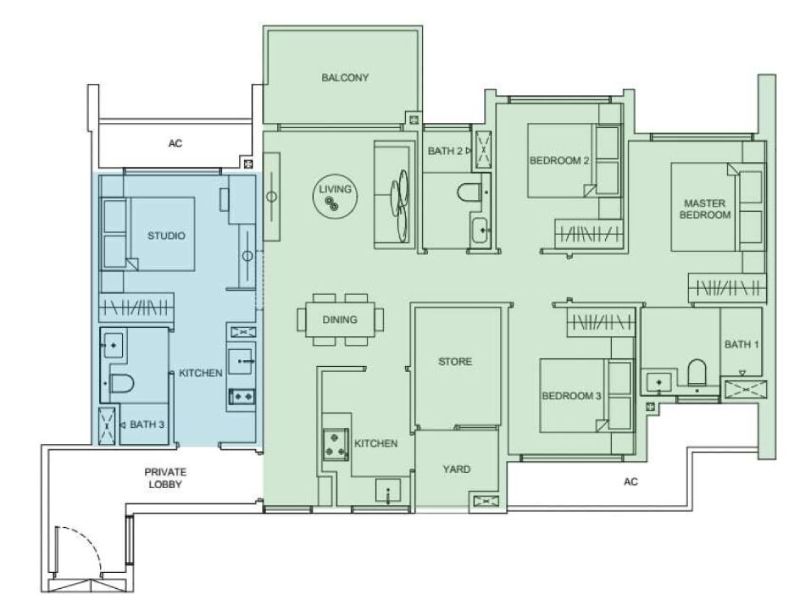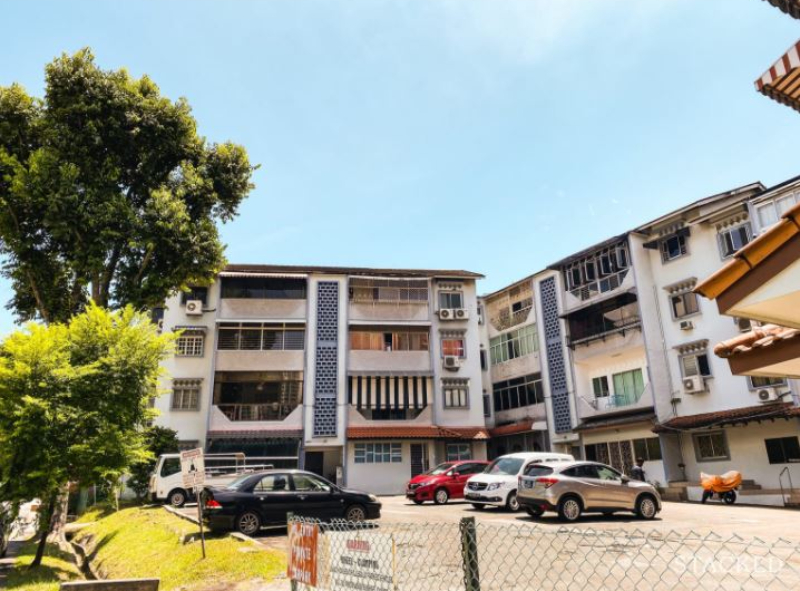Home prices are peaking in 2021, and Additional Buyer Stamp Duty (ABSD) has raised the question of whether a property is a great investment.
Whether landlord or owner-investor, the real estate market is no longer what it was when it was built from 2009 to 2013; or like the “golden era” of Singapore’s transition to a First World country.
Instead, here are some of the most important factors to ensure that your property can continue to be used as a retirement plan:
1. You need to know what role your property will play after retirement
Not all properties can perform the same function.
For example, suppose you buy an old walk-in apartment with a 60-year lease term for $ 800,000 (lower prices are possible for older long-lease properties).
You can rent it for $ 3,000 per month and get an above average gross rental return of 4.5 percent. This is well above the average for most residential properties of two to three percent; But is this a great retirement plan?
If the rental money doesn’t flow into your retirement and you are expecting resale profits, this is not a good idea. Until it is resold in 20 years, buyers are unlikely to get financing for your property (see below).
Alternatively, what if you bought a new launch for $ 1.4 million but still only got a rental income of $ 3,000 per month?
At 2.5 percent, the rental yield is less attractive; But since it is new, there is a better chance of resale profits because it is not too old even if you sell 20 years later.
We can also posit a third scenario: you could use the accumulated savings to buy the very old way (no loan) since you are about to retire. Assuming you are around 65 years old, you could earn $ 3,000 a month by the time you die. You may not care about any resale profits.
Before you can decide whether it is a retirement plan, you need to be very clear about what your property should do.
2. You know how you are going to monetize the property if you don’t downgrade / sell
For many Singaporeans, retirement means selling their property and downgrading it to a smaller one. However, this is not practical for everyone.
In these cases, you need to make sure that there is some way to monetize your property after you retire. It is painful to own a million dollar condo but still not have an income.
In some cases, buyers plan to have tenants after retirement. These buyers can seek dual-key units that are split into two sub-units. This allows them to rent out part of the property without losing privacy.

Another option – for those who are financially good – could be to keep the apartment after the five-year minimum occupancy period (MOP) and then buy a second property.
This will collect Stamp Duty for Additional Buyers (ABSD), but it means they can rent out their entire condo while staying in your condo. They can also live in their apartment while renting the condo if they want more rental income.
In addition, there are other financing models and options – like a reverse mortgage to top up your CPF (currently only available from DBS) or Lease Buyback Schemes (LBS) from HDB.
If you plan to use these systems, make sure they meet quantified retirement goals. For example, if you rent out the other half of your double key unit, would that be enough to achieve your desired income replacement rate (IRR)?
This should be discussed with a finance professional in conjunction with real estate professional data or forecasts.
3. The lease has not expired too far

For long-term real estate investments – such as a home that you hold for 20 or 30 years – real estate can be worth the premium.
With a term of 60 years or less, future buyers may no longer be able to secure full financing. Bank loans are no longer possible for a term of 30 years or less.
In the case of HDB-Immobilien, the CPF cannot be used to purchase apartments with a rental period of 20 years or less.
Since future buyers will not receive adequate funding, they will have to pay for most of your unit in cash. At this point, there is a high probability that you are selling your property with little or no profit.
Also, keep in mind that there are fewer incentives to upgrade or wait for a property near the end of the lease. You can see this effect in shabby, layered malls.
When there are only a few decades left, many residents do not want to increase maintenance fees to restore old facilities, upgrade landscaped areas, etc.
4. The property is not too niche, with close appeal

A good example of niche properties are single rooms under 500 sq ft (also called shoeboxes).
These are great for specific purposes, e.g. B. as a starting point for new investors or landlords who want to track the rental yield of certain tenant groups (e.
But when you think of resale profits – like selling your shoebox unit to replenish your retirement savings – these traits can be riskier. Keep in mind that single rooms are too small for family units, so some of the most typical buyers – like HDB upgrades – likely won’t be interested.
Likewise, properties like walk-up apartments or boutique condominiums in land enclaves (usually far from amenities) can be more difficult to sell. These properties may be trending at the time of purchase, but may have fallen out of favor decades later.
This does not apply to all of these units; However, if you are expecting resale profits later on, it is generally best to stick with properties of broader appeal. This means sticking to the basics like location and schools.
5. You should be able to pay off the home loan by the age of 55
If you are still on a home loan after age 55, the chances are that your property could become a liability rather than an asset.
Also, reaching your CPF withdrawal age and realizing that you can only get $ 5,000 because the bulk of your CPF has been drained on your outstanding home loan is pretty depressing.
As most financial advisors point out, old age carries the risk of lost income. Layoffs or re-employment at lower wages are real possibilities. You risk serious financial losses if you are forced to sell your property in a poor market near retirement.
It can also be difficult to refinance yourself to get lower interest rates as you get older; You may not qualify for a cheaper loan package.
So while you can keep your CPF-OA past 55 and continue to use it to repay the home loan, it is advisable to try to finalize things at this point.
ALSO READ: 5 New Realities To Retire For The Millennial Singaporean
6. If you have other co-owners, they are on board with the plan for the property

It is not uncommon in Singapore to have co-owners such as B. a spouse, child, son or daughter-in-law, etc.
If you are planning on using the property for retirement, it is important that your co-owners understand your intent. Otherwise, there could be a conflict between the owners as to whether they should be sold.
For example, let’s say you want to sell your condo at age 65 to fund your retirement. However, you have not correctly communicated this to your co-owner child.
This creates a problem when you are ready to sell. For example, if your child agrees to sell, they would be selling a private property; and they can then not apply for a BTO apartment for 30 months. This could leave them stuck buying a more expensive resale apartment or renting it for more than two years.
There can also be disagreement about whether it is “the right time” to sell. You may not have to worry about higher returns as long as you can meet your retirement goals. However, your co-owners may have higher goals than you.
All of this can result in your “old-age property” being held long after it is sold; or sometimes sold before you intend to (sometimes your co-owner may push you to sell because they have their own financial goals).
7. The property is part of your retirement plan, not the whole
If property costs so much that you can’t afford to invest in something else, it probably isn’t a huge retirement asset.
If you have nothing but the one property (CPF savings all wiped out, no stocks or bonds, no endowment plans, etc.), you are making an all-in bet on future property value or profitability. This is not actually a “retirement asset” but a risky real estate game.
[[nid:521575]]
Better make sure your property is part of your financial plan as a retirement plan; it shouldn’t be the budget.
Ultimately, investing in real estate at the wrong time can be a costly decision. The fact is, you may retire at the worst time in the real estate cycle – it’s always hard to pinpoint when. If this was your only retirement investment, you could be forced to sell it during the downtrend and possibly even take a loss.
Of course, you could wait for the upswing to sell for a profit. But as with anything, this can be a long wait, and time is a time you can’t afford to retire.
While we believe real estate is a great asset class, a degree of balance and diversification is important. It is definitely wise to buy within your means as you will have enough holding power to weather downturns.
This article was first published in Stackedhomes.

